fischereco2
36 Cal.
- Joined
- Aug 7, 2014
- Messages
- 95
- Reaction score
- 1
Hey guys,
Just wanted to share a little folding knife I made. Not sure how historically accurate something like this really is, I know that modern french knives with this style of locking device have quite a long history. I've seen reference to some ring pull knives in the 18th century, but not with an antler tine handle. Still, I think they make a cool little knife to keep in the pocket while trekking.
This one is definitely kind of a prototype for me. It works well enough, but the blade is difficult to open, and I cracked the tip of the antler fitting the spring on the back. In the future I will make my blade slot a little wider, and use slightly thinner spring steel so fitting the spring on the spine isn't so difficult. The blade is nice and sharp though, made out of forged 1084 steel. I went for an English penny knife style shape. I'm sure this blade will serve me well despite its flaws and I'm planning on making a few improved ones.
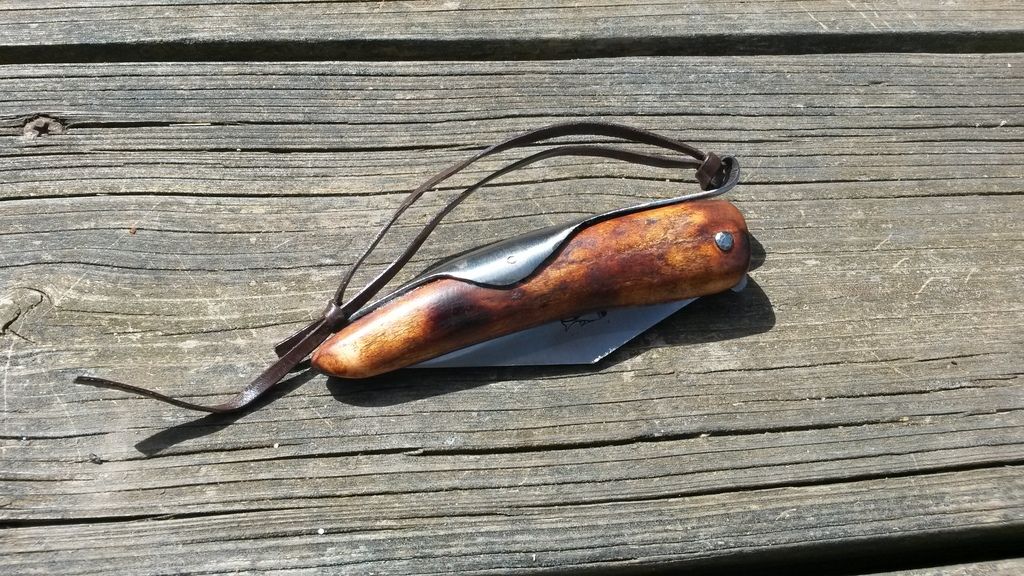
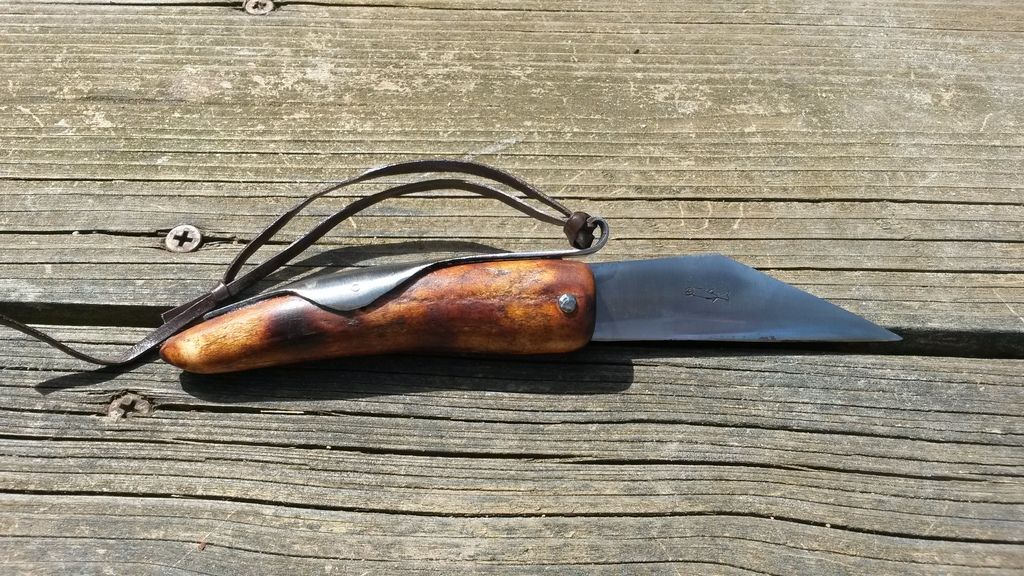
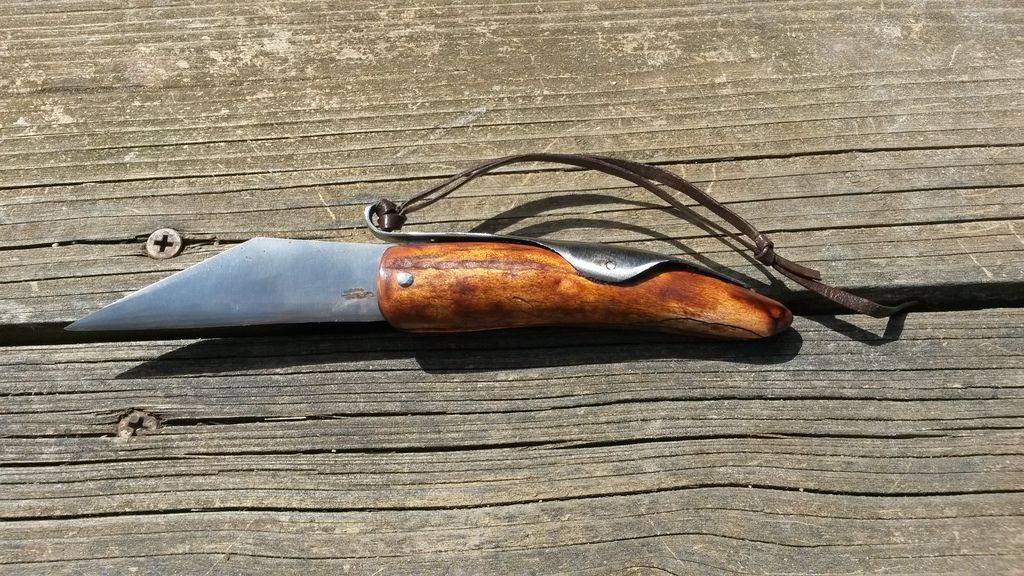
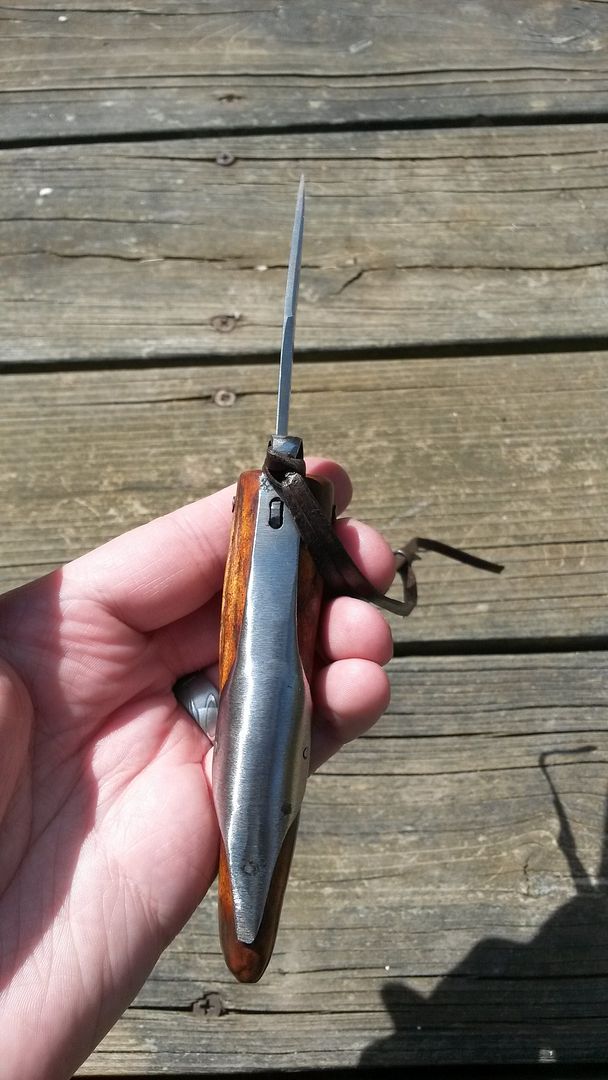
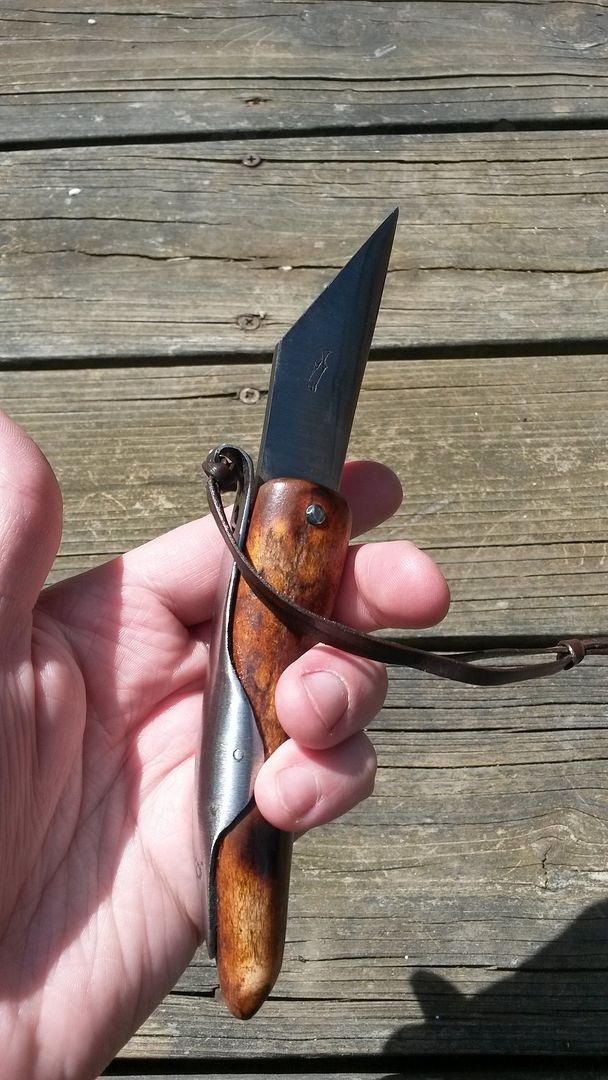
Just wanted to share a little folding knife I made. Not sure how historically accurate something like this really is, I know that modern french knives with this style of locking device have quite a long history. I've seen reference to some ring pull knives in the 18th century, but not with an antler tine handle. Still, I think they make a cool little knife to keep in the pocket while trekking.
This one is definitely kind of a prototype for me. It works well enough, but the blade is difficult to open, and I cracked the tip of the antler fitting the spring on the back. In the future I will make my blade slot a little wider, and use slightly thinner spring steel so fitting the spring on the spine isn't so difficult. The blade is nice and sharp though, made out of forged 1084 steel. I went for an English penny knife style shape. I'm sure this blade will serve me well despite its flaws and I'm planning on making a few improved ones.










